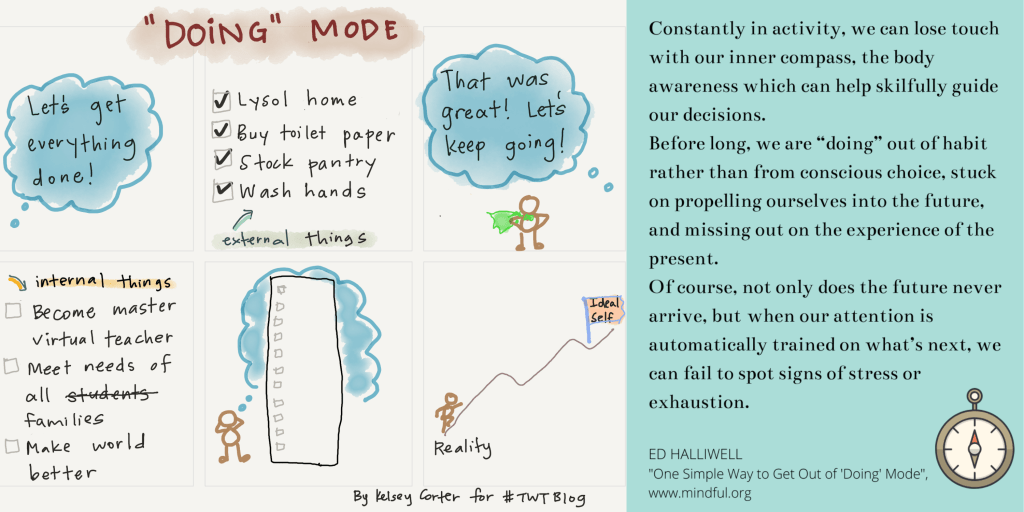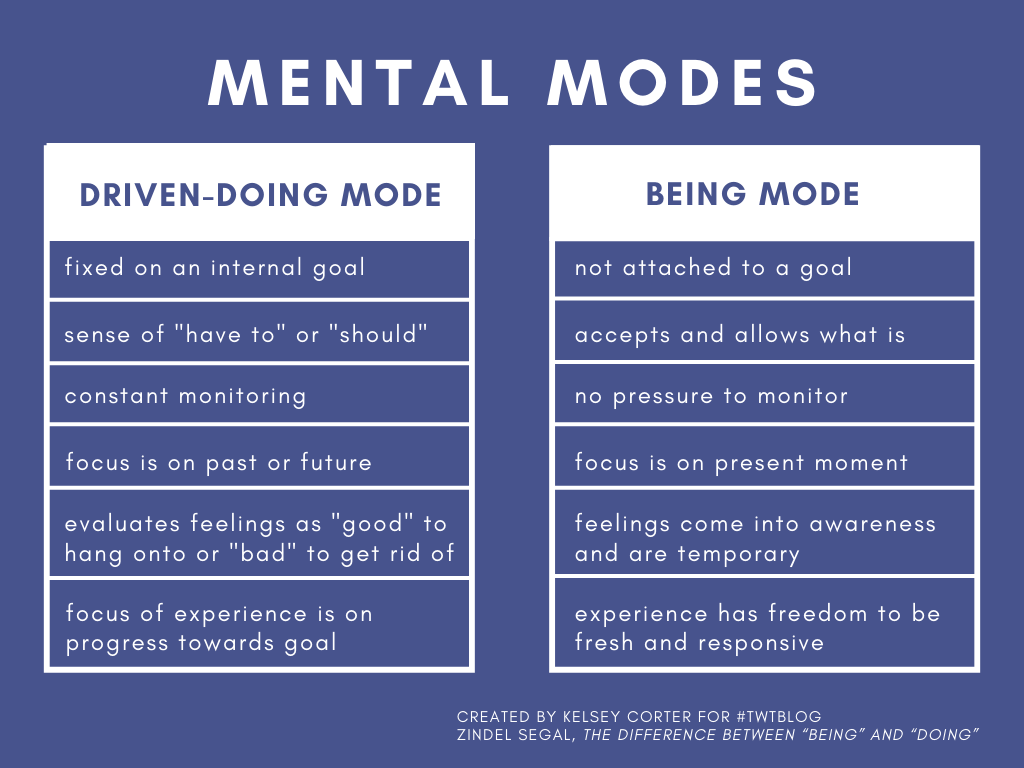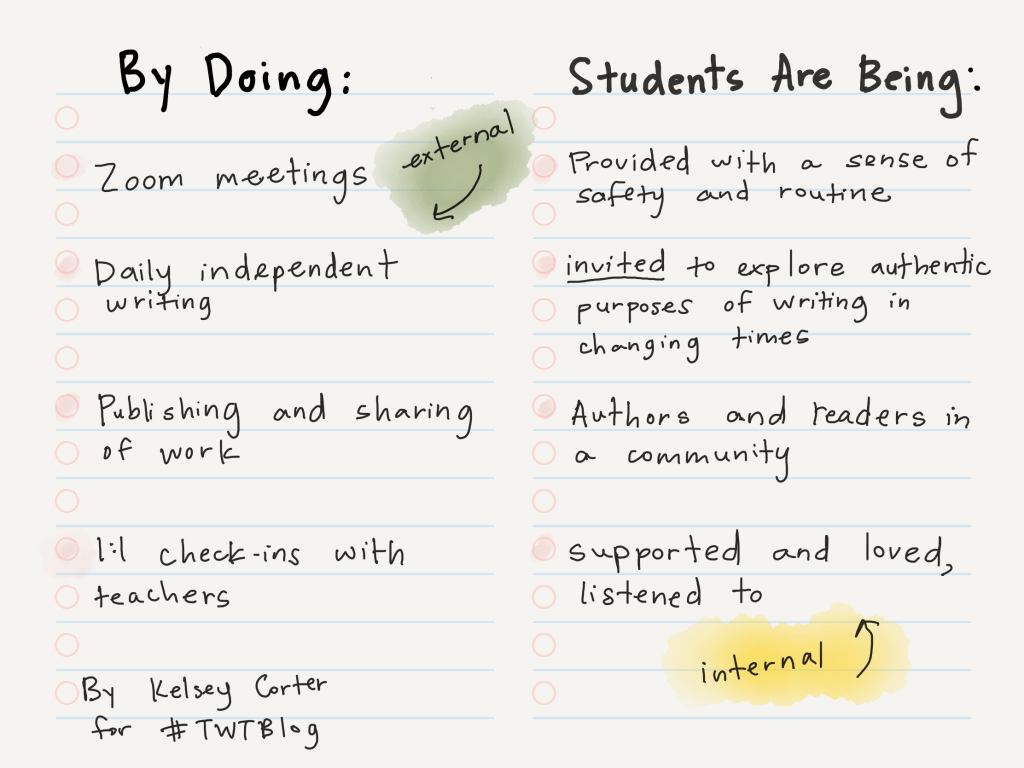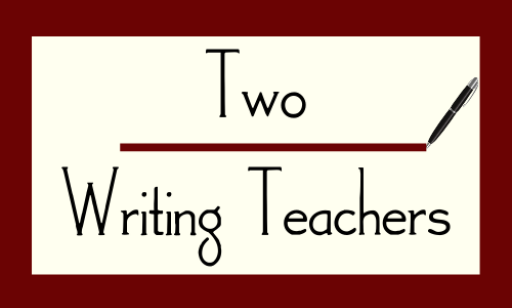36 hours. 36 hours until we would say goodbye to the kids and classroom until…we weren’t sure when. We still aren’t sure.
My co-teacher, Madeleine, and I made a list. That’s how we cope with insurmountable tasks: we make lists.
Madeleine collated take-home work in an assembly line across the rug. I photocopied books for writing. 10 books x 27 kids…that’s a lot of paper. Just press “Start.“
Time for the kids to go. Bags packed, more full than usual. Each departure felt like a limb being tugged away from me.
Another list.
We filled our bags with curriculum, readalouds, chart paper, markers, and writing paper. Agent Santiago began the evening walkthrough — all smiles, as usual. Hurry, the building closes at 6:00.
Oh, no. The plants. The pets. What are we forgetting?
Another list.
We dropped off our bags and went to the grocery store. Don’t touch your face!
20 days later and the rhythm of lists — the rhythm of doing — hasn’t stopped. Perhaps it has been the pace of life for much longer. I feel it now, more than ever.
The Mind at Work
Making lists, along with other mental activities such as writing, lesson planning, or video-chatting with someone (everyone, when in quarantine), activate patterns of brain activity, known as modes of mind. These patterns shift, like the gears of a car, as we move from one activity to another. There are two main modes of mind:
- doing — completing tasks towards a predetermined goal.
- being — allowing oneself to experience the present moment.
There are certainly times when functioning in doing mode is beneficial, perhaps even necessary. But it can become problematic when doing mode attempts things which it cannot achieve, such as desired feelings, identities, and self-worth. In this state, the mind continues to compare our current reality alongside our perceived “ideal” reality. Unsatisfied, the mind in doing mode, generates tasks to compensate for the shortcomings, as illustrated in the comic below.

Zindel Segal, Professor of Psychology at the University of Toronto, refers to doing mode, in its problematic state, as driven-doing. He suggests, in “The Difference Between ‘Being’ and ‘Doing,'” that mindfulness can help with becoming aware of unhelpful and helpful mental modes and “shifting gears” when necessary.

Shifting Gears
Many of us are in a perpetual state of doing…it’s exhausting. There’s much to do, many roles to juggle, and an unspoken pressure that lingers.
But when teaching from a state of doing, we risk imparting a culture of doing upon children — a culture of comparing, competing to attain goals, and hurrying to finish tasks. In collectively doing, time is taken away from collectively being.
In collectively being, space opens for feelings to surface and release, for processing events, for experiencing fulfillment — space that can be opened through writing. Yes, now, more than ever, time to collectively do writing must not overshadow time to collectively be writers.
So, before making another list of things “to do,” before sharing a list of things for your students “to do,” take a moment to PAUSE (consider it a COVID-19 order from us here, in NYC). Pause whenever a shift in mental-gears, from doing to being, is needed.
Pause and ask:
- Is what I am trying to achieve/creating tasks for driven by an external or internal source? (If external, like organizing the closets, keep going! If internal, like recording the perfect virtual minilesson, remind yourself that no amount of practicing will make it possible and shift into to being mode.)
- Is what I’m doing in this moment helpful or unhelpful for my current well-being, personally and as a teacher of writing?
- Is what I’m doing in this moment aligned with my values as a person and as a teacher of writing?
- Is what I’m asking students to do in this moment helpful or unhelpful for their current well-being as children and as writers?
- Does what I’m asking students to do in this moment allow for freedom of expressing who they are as children and as writers?
Doing, Through Being Mode
While doing and being are fundamentally different, we can align what has to be done (i.e., non-negotiables), with identities and values. In planning our daily tasks this way, we set ourselves and our students up for being in the moment.


Both mental modes serve positive, productive roles in daily life. As we become more aware of times when doing and being are healthy and unhealthy, we can make changes to routines and tasks for ourselves and children — in writing and beyond.



Thank you so much for this post. As a school, we are thinking about how to reduce the perceived distance between students & teachers and between students & peers while we are out of the building. This post gives me hope that we can act (and be!) in simple, familiar ways that will make us all feel more connected.
LikeLiked by 1 person
what a fantastic article! i love it!
LikeLike
Being is the ultimate goal for all humans. It is the gift we are meant to receive as humans. May we all be blessed with being, and share this with our offspring and students. There is no truer learning.💛
LikeLike
It is a very powerful article, that explains some how how and why I am feeling right now
LikeLike
Hi! Though I have been an ESL teacher for 10 years, I returned in 2018 to obtain my credential in ELA and am in my last semester. I “found” your blog through a methods professor last semester and just love it. Almost exactly 1/2 way through this semester (my last!), COVID-19 closures hit and everything immediately became “doing” for me, both driven by myself and my program. I really appreciated this thoughtful post that gave me the language to label why things have been so stressful and what I hope to achieve even though my role has drastically changed. Thank you!
LikeLike
Thank you so much for this thoughtful post. It helps me to name the unsettled state I’m in with remote teaching and learning. I appreciate the thinking and graphics as I work to recognize and shift from one mode to another. Thank you.
LikeLike
Kelsey, this is such a thoughtful and reflective post! Thank you for naming how we are feeling and including the content around the why. The beginning of the post also captures the grief many teachers are experiencing at (potentially) ending the school year so abruptly and with so much uncertainty. Thank you.
LikeLike
thank you for that all important differentiation — for the kids, for ourselves
stay safe
LikeLike
I’ve been feeling so depleted since working remotely, and I haven’t found the right language or reason for it. Your blog really hit home as to why I’m feeling like this because I have a hard time shifting gears out of “doing” mode. I think “doing” gives me a false sense of control in uncertain times. Thanks for outlining the two and for the ideas.
LikeLike
This is the exact post that I needed to read today. Thank you so much for illuminating these modes. ❤️
LikeLike
I can’t thank you enough for this! You named (and drew so beautifully) exactly what I’m experiencing. I’m stuck in “doing” mode. Thank you so much for reminding me (and showing me how) to be.
LikeLiked by 1 person
So happy to hear it’s helpful! I needed to write this one to get myself unstuck, too. Happy be-ing. 🙂
LikeLike